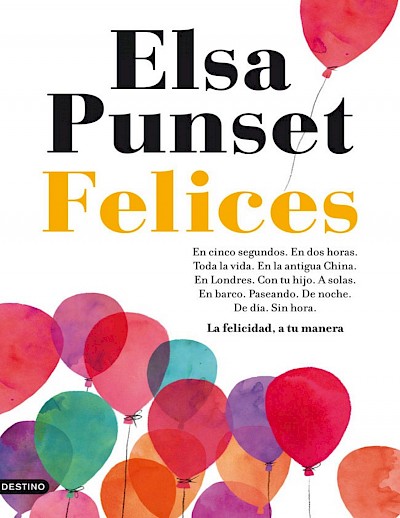The American writer Edna Buchanan says that friends are the family that you can choose. But, even if we have friends, the family of origin - parents, grandparents, brothers, with the unexpected brothers-in-law, nephews and in-laws - weighs heavily on our lives. There we learn small basic patterns with which we navigate the world, our way of bonding, resolving conflicts and valuing ourselves, and there we continue to learn, day by day, to be more flexible, compassionate, also to set limits, protect ourselves and resolve problems. To find a balance between the collective and the individual. The family is a difficult and impossible challenge to avoid.
To help us manage the tangle of opportunities and family duties, many cultures generate rituals that help us find spaces to celebrate and solve those family challenges. As we saw in the first pages of the book, Confucius invites us to pretend that we are other members of the family, to better understand their perspectives and to be able to solve a problem, even if only in an imaginary world (the brain does not distinguish well between reality and fiction , and the human psyche appreciates that we resolve our conflicts, even if it is on a purely mental level).
Many family and community rituals also have a playful, festive component. And it is that families can become an excessive weight throughout life, and it is essential, as in any human relationship, to ensure that we balance the negative with the positive. In fact, studies by psychologist and professor John Gottman on the balance necessary for human relationships to work reveal that we need to generate at least three times the amount of positive versus negative emotions for relationships and environments to flourish.
Tsagaan sar, the white moon festival, a festive ritual to unite families
The celebration in Mongolia of the Tsagaan sar, the white moon festival, is an opportunity to celebrate the family from that festive point of view. The Tsagaan sar is one of the most important moments on the Mongolian calendar, the celebration of the New Year. It is an ancient festival that lasts about fifteen days and reflects the nomadic, shamanic roots - present in the celebration of the blue sky and natural forces - and Buddhists of the Mongolian culture. Centuries ago, the Tsagaan sar was celebrated during weddings or spiritual gatherings, and also to train soldiers before going into battle.
Preparation begins weeks before the festivities and works from many perspectives. The general principle is that during this stage everything old from the previous year is left behind and the new "white moon" cleans everything. People avoid negative emotions — anger, greed, or sadness — and open their spirits to positive thoughts. It is also used to thoroughly clean the houses and closets, with their symbolic connotations of order and interior cleaning. Facing the rest of the community, Tsagaan sar is the ideal time to solve old problems with family and friends, repay outstanding debts and ensure that the year begins without dragging the negative.
On New Year's morning, the family goes to an ovoo, an outdoor stone altar where the end of winter is celebrated and the gifts of nature and family are appreciated. One of the first rituals is the zolgokh, in which younger people hold the elbows of their elders to show their support and respect. For fifteen days, families visit each other and renew their ties, especially between young and old. Stories are told, they dress in traditional costumes, play games, solve problems and celebrate the common heritage, solidarity, continuity.
WHAT CAN WE LEARN FROM THIS TYPE OF FAMILY CELEBRATIONS?
There are at least two great advantages to systematizing, celebrating, and consciously paying attention to our family. On the one hand, studies tell us that knowing our family history allows us to be emotionally healthier, more solid. It is about telling stories to our children, giving examples, good and bad, how conflicts were resolved or not, exploring how we can improve what is in each family, transmitting names, anecdotes, everything that helps a child understand where it comes from.
There are three types of family narrative: the ascending one: "we have come out of nowhere"; the descending: "we have lost everything", and the most recommended, which is the oscillation: "we have had everything, good and bad", since it is the type of narrative that promotes resilience, the ability to overcome obstacles and have optimism and hope.
On the other hand, love that is not expressed is useless ... We all feel stronger if we are part of a human framework, instead of being loose threads. Don't let too much time go by without demonstrating and celebrating your family and emotional ties: every week or every month, make sure you reach out to your family members, especially the older ones. This time spent reconnecting will help you all.
